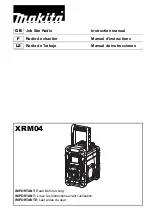
PRIMUS
R
660 Digital Weather Radar System
A28–1146–111
REV 2
Normal Operation
4-4
NOTES:
1.
Refer to the specific EFIS manual for a detailed
description.
2.
The example shown is for installations with TEXT
FAULT disabled.
Standby
When Standby is selected, and the radar is not in dual control mode
(refer to table 2–1, dual control mode truth table, for dual control
operation), the antenna is stowed in a tilt–up position and is neither
scanning nor transmitting.
Standby should be selected when the pilot wants to keep power applied
to the radar without transmitting.
Radar Mode – Weather
For purposes of weather avoidance, pilots should familiarize
themselves with FAA Advisory Circular AC 00–24B (1–20–83).Subject:
”Thunderstorms.” The advisory circular is reproduced in Appendix A of
this manual.
To help the pilot categorize storms as described in the advisory circular
referenced above, the radar receiver gain is calibrated in the WX mode
with the GAIN control in the preset position. The radar is not calibrated
when variable gain is being used, but calibration is restored if RCT or
target alert (TGT) is selected.
To aid in target interpretation, targets are displayed in various colors.
Each color represents a specific target intensity. The intensity levels
chosen are related to the National Weather Service (NWS) video
integrated processor (VIP) levels.
In the WX mode, the system displays five levels as black, green, yellow,
red, and magenta in increasing order of intensity.
If RCT is selected, the radar receiver adjusts the calibration
automatically to compensate for attenuation losses, as the radar pulse
passes through weather targets on its way to illuminate other targets.
There is a maximum extent to which calibration can be adjusted. When
this maximum value is reached, REACT compensation ceases. At this
point, a cyan field is added to the display to indicate that no further
compensation is possible.
Summary of Contents for PRIMUS 660
Page 1: ...AD 54257 ...
















































